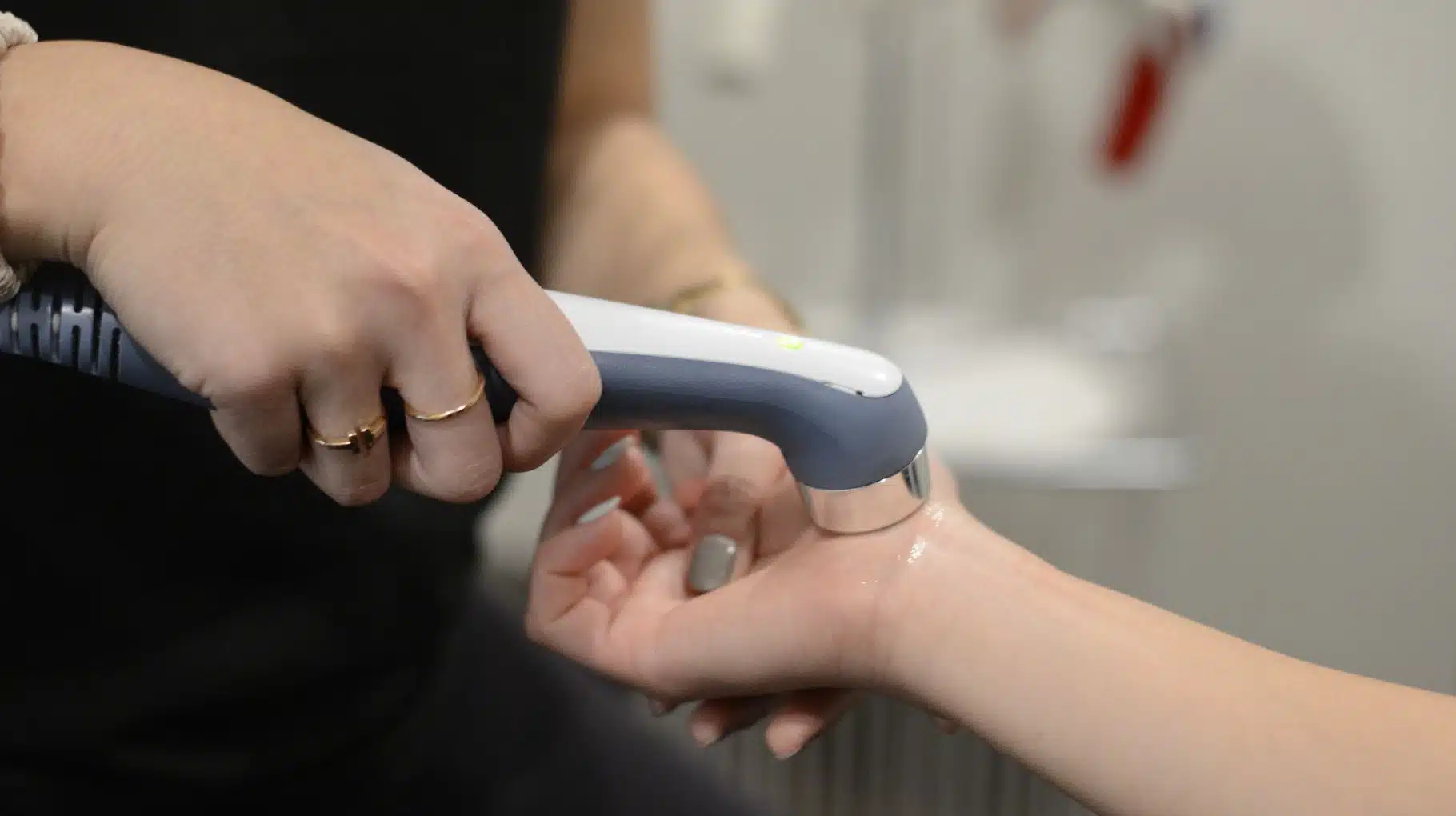Ultrasound Therapy Vancouver
A non-invasive solution tailored to alleviate pain, enhance tissue healing, and restore your mobility for a healthier, more vibrant life.
What to Expect During a Manual Therapy Treatment
When you come in for ultrasound therapy, the treatment begins with a careful examination to pinpoint the specific area needing attention. You’ll be comfortably positioned, and a gel will be applied to your skin to ensure the ultrasound waves can be transmitted effectively. Using a handheld device, your therapist will gently move it over the target area. The session typically lasts between 5 to 10 minutes, during which you might feel a pleasant, warming sensation. The process is painless, aiming to reduce inflammation, promote healing, and alleviate pain, making it a seamless experience from start to finish.
What to Expect
Why Consider Ultrasound Therapy?
Ultrasound therapy offers a non-invasive, painless treatment option that utilizes sound waves to promote healing and pain relief in soft tissues and joints. It’s an excellent choice for those seeking alternatives to surgery or medication. This therapy can accelerate tissue repair, reduce inflammation, and alleviate pain, making it ideal for conditions like sprains, tendonitis, and bursitis.
Our team of experts is ready to guide you through a personalized treatment plan designed for your specific needs. Don’t let pain hold you back any longer. Contact us now to begin your journey to recovery.
F.A.Q.s
Learn about our ultrasound therapy services, designed to address specific health conditions and improve recovery.
How does ultrasound therapy enhance blood flow?
Ultrasound therapy promotes increased blood flow to the treated area by emitting sound waves that penetrate the skin and underlying tissues. This process stimulates the blood vessels, enhancing circulation and bringing more oxygen and nutrients to the affected area, which is crucial for the healing process.
What distinguishes ultrasound treatment from massage therapy?
While both ultrasound treatment and massage therapy aim to alleviate pain and promote healing, ultrasound therapy uses sound waves to reach deeper tissues that are not easily accessible by manual massage. This allows for targeted treatment of specific areas, promoting healing from within, whereas massage therapy focuses on manipulating the body’s soft tissues with pressure and movement.
Can ultrasound therapy help with TMJ dysfunction?
Yes, ultrasound therapy has been found to be very effective for treating TMJ (temporomandibular joint) dysfunction. Many patients have reported great success with this treatment, experiencing significant relief from pain and improvement in jaw function. Ultrasound therapy for TMJ dysfunction is a non-invasive option that focuses on reducing inflammation and pain, enhancing tissue healing, and improving mobility without the need for medication.
Can ultrasound therapy help with scar tissue?
Yes, ultrasound therapy can be beneficial in treating scar tissue. The sound waves can break down the scar tissue, promoting a more elastic, healthy tissue formation. This process helps in reducing stiffness and improving mobility in the affected area, contributing to a more effective healing process.
How does ultrasound imaging differ from ultrasound therapy?
Ultrasound imaging is a diagnostic technique used to view inside the body, such as during pregnancy or to examine internal organs, without using invasive procedures. In contrast, ultrasound therapy is a therapeutic approach utilizing sound waves to treat musculoskeletal conditions, including muscle spasms, chronic conditions, and injuries by promoting healing and pain relief.
Is it normal to feel a slight warming sensation during ultrasound therapy?
Feeling a slight warming sensation during ultrasound therapy is normal and indicates that the sound waves are effectively penetrating the skin and underlying tissues. This warmth is part of the process that helps increase blood flow and relax tissues, contributing to the therapy’s pain relief and healing effects.
What is therapeutic ultrasound, and how does it support the healing process?
Therapeutic ultrasound is a treatment modality used in physiotherapy to promote tissue healing and relieve pain. It works by delivering high-frequency sound waves into the affected tissues, stimulating the cells and increasing blood flow. This aids in accelerating the body’s natural healing processes, making it highly effective for a variety of conditions.
Does ultrasound therapy cause increased blood flow immediately?
Ultrasound therapy can lead to immediate improvements in blood flow in the treated area. The sound waves encourage vasodilation, or the widening of blood vessels, which enhances blood circulation. This immediate effect contributes to reducing swelling and promoting the delivery of essential nutrients and oxygen for tissue repair.
What should I expect during physiotherapy sessions involving ultrasound therapy?
In physiotherapy sessions that include ultrasound therapy, you can expect a non-invasive treatment focusing on specific problem areas. The therapist will apply a conductive gel to your skin and move a handheld device emitting sound waves over the target area. You may feel a slight warming sensation, but the procedure is generally painless and can last several minutes, depending on the condition being treated.
Can ultrasound therapy target underlying tissues effectively?
Yes, ultrasound therapy is specifically designed to target underlying tissues. The sound waves can penetrate deep into the body, reaching areas not easily accessible by other non-invasive treatments. This ability to target deep tissues makes ultrasound therapy effective for treating conditions at their source, including deep muscle spasms and underlying tissue damage.
How does ultrasound therapy benefit chronic conditions?
Ultrasound therapy can be particularly beneficial for managing chronic conditions by reducing pain, increasing flexibility, and improving overall function. The therapy’s ability to enhance blood flow and stimulate the healing process can help in managing symptoms of chronic conditions over time, providing a non-invasive option for long-term relief.
If you have further questions or if our FAQs didn’t cover your concerns, please reach out to us directly. We’re here to assist you.

